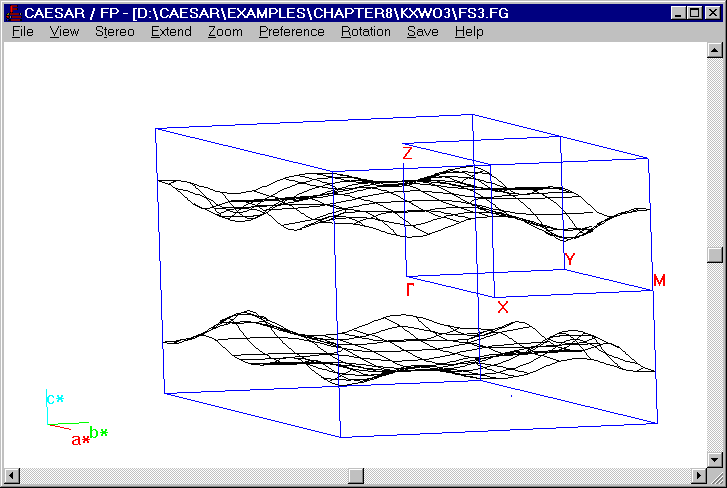3D Fermi Surface of WO3
The calculated Fermi surface nesting vector q = ~0.5c* is consistent with the observed
superlattice reflection peaks of AxWO3 (A = K, Rb). However, CsxWO3 does not undergo a CDW
transition although it has a 1D Fermi surface as do KxWO3 and RbxWO3. To understand this
difference, one should note that a CDW formation involves a periodic lattice distortion, which strains
the lattice and hence destabilizes it.11,12 Thus, a lattice cannot undergo a CDW transition unless the
electronic energy gain dominates over the destabilization caused by the lattice strain. A CDW
formation would be favorable for a system with soft lattice. As the lattice becomes stiffer, the CDW
formation would become less favorable and hence occur at a lower temperature. The crystal structure
of AxWO3 (A = K, Rb, Cs) suggests that the stiffness of the 3D WO3 lattice should increase as more
alkali atom sites are occupied, and that for a given x value the stiffness of the lattice should increase in
the order KxWO3 < RbxWO3 < CsxWO3, because the cation size increases in the order K+ < Rb+ <
Cs+. The lack of a CDW transition in CsxWO3 implies that its lattice is too stiff to accommodate a
CDW formation. The occurrence of a CDW in KxWO3 and RbxWO3 is consistent with the assertion
that their lattices are less stiff than that of CsxWO3.

Figure. Fermi surfaces of the [WO3]x- lattice
Go back to The Gallery